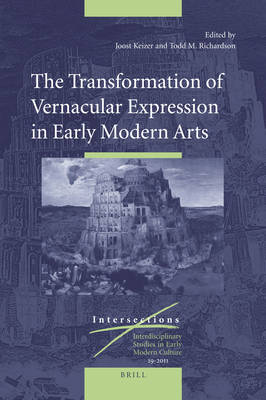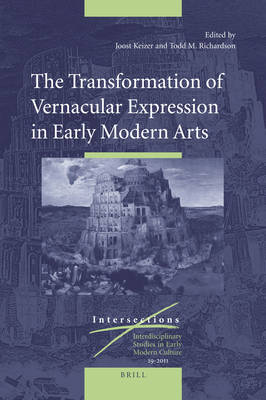
- Afhalen na 1 uur in een winkel met voorraad
- Gratis thuislevering in België vanaf € 30
- Ruim aanbod met 7 miljoen producten
- Afhalen na 1 uur in een winkel met voorraad
- Gratis thuislevering in België vanaf € 30
- Ruim aanbod met 7 miljoen producten
Zoeken
Omschrijving
In response to the dominance of Latin as the language of intellectual debate in early modern Europe, regional centers started to develop a new emphasis on vernacular languages and forms of cultural expression. This book shows that the local acts as a mark of distinction in the early modern cultural context. Interdisciplinary in scope, essays examine vernacular strands in the visual arts, architecture and literature from the fourteenth to seventeenth centuries. Contributions focus on change, rather than consistencies, by highlighting the transformative force of the vernacular over time and over different regions, as well as the way the concept of the vernacular itself shifts depending on the historical context.
Contributors include James J. Bloom, Jessica E. Buskirk, C. Jean Campbell, Lex Hermans, Sun Jing, Trudy Ko, David A. Levine, Eelco Nagelsmit, Alexandra Onuf, Bart Ramakers, and Jamie L. Smith
Contributors include James J. Bloom, Jessica E. Buskirk, C. Jean Campbell, Lex Hermans, Sun Jing, Trudy Ko, David A. Levine, Eelco Nagelsmit, Alexandra Onuf, Bart Ramakers, and Jamie L. Smith
Specificaties
Betrokkenen
- Auteur(s):
- Uitgeverij:
Inhoud
- Aantal bladzijden:
- 424
- Taal:
- Engels
- Reeks:
- Reeksnummer:
- nr. 19
Eigenschappen
- Productcode (EAN):
- 9789004212046
- Verschijningsdatum:
- 14/10/2011
- Uitvoering:
- Hardcover
- Formaat:
- Genaaid
- Afmetingen:
- 170 mm x 246 mm
- Gewicht:
- 839 g

Alleen bij Standaard Boekhandel
+ 266 punten op je klantenkaart van Standaard Boekhandel
Beoordelingen
We publiceren alleen reviews die voldoen aan de voorwaarden voor reviews. Bekijk onze voorwaarden voor reviews.











